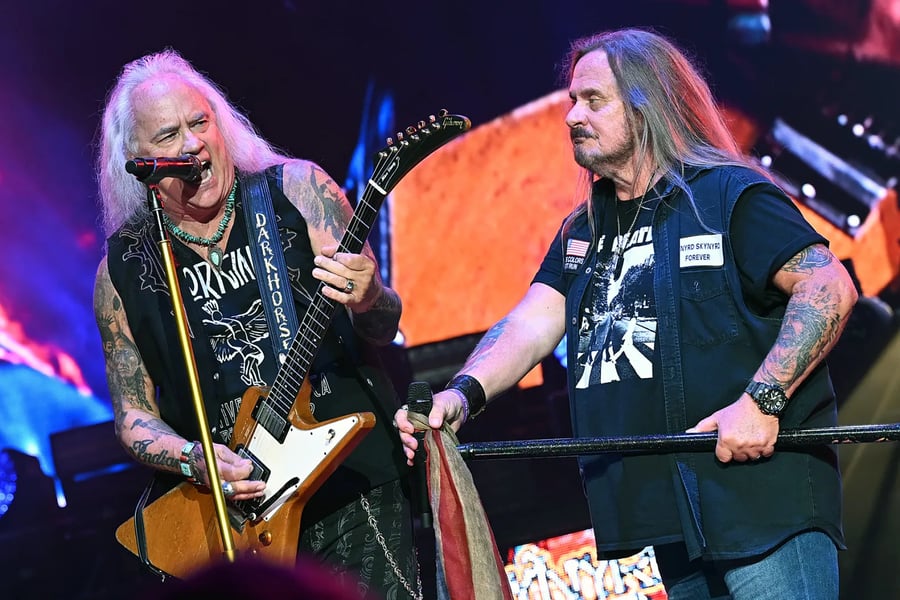Zombie Bands Attack! These Touring Groups Don’t Have a Single Original Member
From Lynyrd Skynyrd to the Four Tops, our rundown of bands that continue to tour without a single classic-era member

Rickey Medlocke and Johnny Van Zant carry on as Lynyrd Skynyrd. R. DIAMOND/GETTY IMAGES
As Trey Anastasio told us recently, keeping a rock band together is an extraordinarily difficult task. “Picture who your best friends were when you were 18,” he said. “And imagine you got trapped in a van with them for 40 years…. It just builds up, and personalities clash. I’m talking real loathing, like, ‘Don’t put a gun in the room.’ It’s really crazy.”
Anastasio’s band Phish is one of the few acts in rock history to keep their classic lineup together decade after decade. Most groups have at least one major absence due to some combination of retirement, illness, death, personality conflicts, or prolonged legal battles. Even the once unbreakable U2 recently wrapped up their Las Vegas run at Sphere with a replacement drummer because Larry Mullen Jr. has been sidelined with a back injury. They still have 3/4 of their lineup standing strong. The Rolling Stones are at 3/5 (or 2/5 if Ronnie Wood is still the new guy to you), Journey are at 2/5, the Who at 2/4, the Eagles at 3/5 (or 1/5 if we’re just counting OGs), and so on and so on.
But what happens when the last legit band member shuffles off? Some groups simply cease to exist, but many others carry on with newbies and pretend they are something more than sanctioned tribute groups. The most recent example is the Four Tops after the loss of Abdul “Duke” Fakir, but they aren’t alone. Here’s our rundown of bands that continue to tour without a single classic-era member. (And while there’s no singular definition of “classic era,” we chose to consider members who were active while the band was still scoring hits.)














































